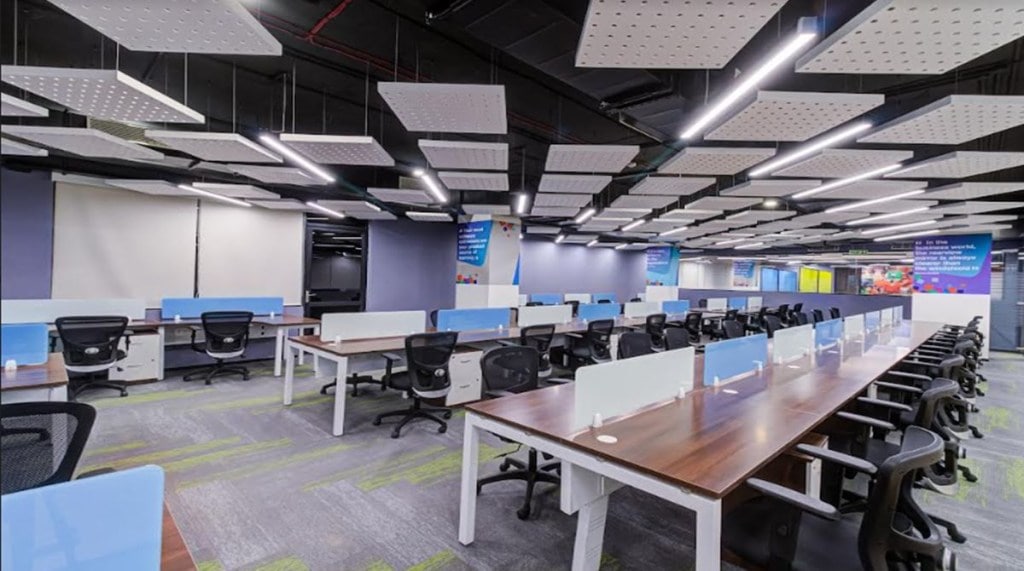– By Sanjay Choudhary
The conventional 9-to-5 office culture has seen a significant transition recently as a result of the convergence of technical advancements and the pandemic’s effects on work dynamics. With this change, the era of the hybrid work model has arrived, allowing employees to switch between remote work and in-person collaboration with ease. As this paradigm gains traction, co-working spaces have become a crucial force in redefining the basic structure of the workplace of the future.
These spaces have quickly changed to meet the changing needs of a varied workforce and are no longer just for startups and freelancers. In addition, co-working spaces include a wide range of facilities tailored to address the challenges presented by the hybrid work model. These areas present an appealing solution for both employees seeking flexibility and companies aiming to cultivate a more agile and motivated workforce thanks to the freedom to access workspaces on-demand, cutting-edge infrastructure, and a lively network of professionals. According to Gartner, hybrid teams are more agile than on-site teams. 70 per cent of hybrid team members claimed that they modified the meeting structure in accordance with the objectives.
Flexibility and work-life balance
A fundamental movement towards flexibility that addresses the complex balance between work and personal life is at the core of the hybrid work landscape. The pinnacle of this flexibility is co-working facilities, which provide staff members the freedom to design their own work schedules around their preferences and times of highest production. Such flexibility increases overall job satisfaction in addition to fostering a healthier work-life balance. Employees are free from the confines of the regular 9-to-5 schedule, allowing them to decide when and where they work. This fosters a sense of ownership over their routines and improves their general well-being. This empowerment fits in perfectly with the changing work ethic of the modern workforce, highlighting the crucial role co-working spaces will play in determining the dynamics of the workplace of the future. According to McKinsey, 87 per cent of workers would accept the opportunity to work more flexibly if their employers made the offer.
Seamless collaboration requires modern infrastructure
Co-working spaces offer a cutting-edge infrastructure built to promote seamless remote teamwork, as they are located at the intersection of virtual and physical communication. These places go beyond geographical boundaries because they have high-speed internet, cutting-edge audio-visual equipment, and cutting-edge meeting rooms. Co-working facilities serve as a bridge between on-site and remote team members in the hybrid work model, where virtual connections are crucial. No matter where you are physically, you can always have uninterrupted interaction, efficient information sharing, and creative brainstorming sessions thanks to modern facilities. Hence, co-working spaces develop as facilitators of technology-driven collaboration as businesses adopt more flexible work arrangements, ensuring that distance does not stifle creativity or productivity.
Promoting innovation and a sense of community
Co-working spaces foster thriving communities that foster collaboration and innovation in addition to their practical advantages. These spaces establish an environment that is favourable to idea exchange, networking, and cross-disciplinary learning by bringing together professionals from various backgrounds and industries. This sense of community not only lessens the feeling of isolation often associated with distant work but also stimulates creative thinking. When professionals with different expertise come together, new insights and creative solutions are generated that might not have been possible in the traditional office structures. Thus, as co-working spaces develop, they start to serve as creative hubs, advancing the hybrid workplace towards an era in which cooperation and innovation are limitless.
Cost-effectiveness and scalability
Co-working spaces are an intriguing option for organizations looking for cost-effective and scalable solutions in the hybrid work landscape. Co-working facilities provide a strategic route for decreasing real estate expenditures as corporations evaluate their office locations. Downsizing traditional offices while providing employees with access to well-equipped workplaces as needed guarantees that resources are allocated optimally. This technique is especially beneficial for startups and small enterprises looking to maximize productivity while minimizing expenses. In addition, co-working spaces offer a dynamic option in a continually changing work ecosystem where adaptability and efficiency are critical.
Co-working spaces: Transforming the hybrid work future
The emergence of the hybrid work model has caused a change in how we perceive the workplace. Co-working spaces have become an essential part of this transformation, meeting the shifting demands of a flexible workforce. Future workplaces will be built around them because of their flexibility, cutting-edge infrastructure, sense of community, and affordable solutions. Thus, co-working spaces are positioned to be crucial in assisting businesses in establishing a more adaptable, collaborative, and innovative work environment as they adjust to this new normal.
(Sanjay Choudhary is the founder & CEO of Incuspaze.)
(Disclaimer: Views expressed are personal and do not reflect the official position or policy of Financial Express Online. Reproducing this content without permission is prohibited.)

